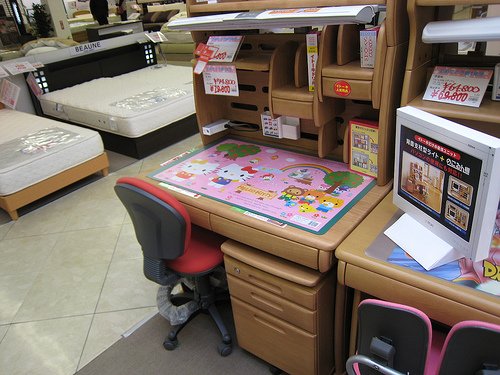All countries have foreigners living in their midst, whether its a Swedish college student working for a season at a ski resort in Arizona or an Iranian assembling windshield washer motors at a factory in Nagoya. Japan’s 1.6 million foreigners currently make up around 1.5% of the population here, which sounds like a lot until you consider that the foreign-born populations of countries like Germany and the U.S. is 9% and 11%, respectively. As you probably know from reading J-List, the Japanese word for foreigner is gaijin (GUY-jihn) which could also be translated as “outsider” since the characters literally mean “outside-person.” Because the word can carry negative connotations, you’ll always hear the more polite word gaikokujin or “outside-country-person” used on the NHK news and in formal situations. Japan’s first encounter with Westerners came in 1543, when Portuguese sailors washed up on Tanegashima, an island near Kyushu. To the Japanese, these foreigners were Bigfoot-sized giants, disgustingly unhygienic and very hairy, and they were called Namban (Southern Barbarians) and thought to be the embodiment of Tengu, legendary long-nosed spirits who lived in the mountains and who loved to cause havoc. We do, don’t we?
One of the most influential foreigners in Japanese history would have to be William Adams, an Englishman who arrived in Japan with a Dutch ship in 1600 and who was befriended by Ieyasu Tokugawa, the third of the three unifiers of Japanese history. Adams’ arrival was good timing for Tokugawa, who put the 19 cannon on the ship to good use at the Battle of Sekigahara, the watershed victory that made him the Shogun (military general) of all Japan and ended Japan’s Warring States Period. Adams showed the Japanese how to build the first Western-style ships, and freely shared his knowledge of astronomy and navigation. As he rose in rank in the service of the Shogun, he eventually became his personal advisor and translator. In thanks for his service, he was made the only gaijin samurai in history, given honorary swords and a fief with retainers in present-day Yokohama. If you’ve read your James Clavell, you know that this is the basis for the book Shogun.
Japan is experiencing an unexpected crime wave, as the rising cost of metals is causing unsavory elements of society to steal anything that’s not nailed down. All throughout the Kanto area there are reports of metal pipes, aluminum siding, wires and other metal objects being stolen from homes, factories and other public places, presumably for shipping for sale to hot markets like China. Even something so lowly as the steel gratings on roads are in demand, and yesterday our city was on the national news when it was reported that sixteen heavy grates had been stolen over the past few days. Additionally, there’s been a rash of thefts of traditional solid copper fire bells that are hung outside at Japanese fire stations, some of which are more than 100 years old. We hope the culprits are caught soon.
J-List sells a line of unique Japanese-themed T-shirts, warm hoodies and embroidered hats, with wacky and fun original designs on them. Today we’ve got a new T-shirt that celebrates one of my favorite things, Japanese beer, with a wacky parody logo that looks great. Let everyone know you love delicious Japanese beer with this wacky new J-List T-shirt.
Neon Genesis Evangelion, the ground-breaking anime series from 1995, is popping up everywhere here in Japan. The Japanese post office has even gotten Eva fever with a rare issuing of Evangelion stamps featuring characters from the series. We’ve managed to get our hands on some of these stamp sets, for fans looking for something really special to add to their collection, on the site now!














